
Kailash Manasarovar Aerial Darshan at Just @ Rs 35,000 Reserve Your Seat Now! Click Here
Tibet is world’s largest plateau and has been aptly referred as roof of the world. As vast as, spanning across the Qinghai, Western Sichuan Province, northern Yunnan, the north-western region of Tibet is yet uninhabited to the present day. For
a tourist, Tibet is a spiritual land for centuries that inculcated and spread the teachings of Lord Buddha in an effort to attain Nirvana. Tourists will find Tibet as a land of magnificent monasteries, mesmerising trekking ground and world’s highest mountains.
Trekking is a wonderful way to reconnect with nature and have a genuine taste of adventure. And ...
After being ruled over by monarchs for hundreds of years, Nepal finally became a republic in 2008. Today, the...
This tour from Nepal to Tibet is a beautiful blend of cultural history of two neighbouring countries viz Nepal...
For those who really wish to take a journey in the Himalayas and experience the best of Tibet but are...
Tibet is referred as the roof of the world for its highest mountains. Experience a tour to Buddhist...
A journey to holy Mt. Kailash and Lake Mansarovar from Lhasa side is considered to be the most scenic
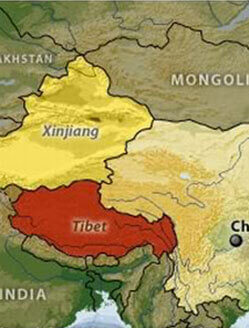
Situated in the west of Central China plain Tibet has been considered as a Western China by the Chinese political system. Tibet is home to about many top mountains of the world including Mount Everest that is situated at a height of about 8,848 meters in Tibet. Tibet is the place of birth for world’s many important rivers including Yangtze, Yellow River, Indus River, Mekong, Ganges, Salween, the Yarlung Tsangpo River (Brahmaputra River). Tibet is also known to be as the “Water Tower” of Asia.
.jpg)
The main religion and almost all the population belong to Tibetan Buddhism, however, People, Lifestyle and Culture of Tibet divided into more than 20 sects, the Gelugpa being the dominant. The Dalai Lama (currently the 14th Lama) enjoys respect and honour both in political and religious matters. The disputes with the Chinese government (the People's Republic of China) leading to the formation of Government in exile, by the Dalai Lama 14th (his full name is Jetsun Jamphel Ngawang Lobsang Yeshe Tenzin Gyatso) and consequently stay in India has been a matter of political dispute for long.
The plateau offers distinct varieties of cultural dimensions, all different from one another with varying regions. Tibetans are mainly divided into several groups, the prominent among them being Changri, Nachan and Hor, further divided into fifty two sub tribes. The effect of multi ethnicity is clearly visible, as most of the groups have a distinct identity. However, Muslims (Tibetan Muslim) and Quiang (livingin the Kham region) are also found in minority. In the Eastern part, a large number of Han Chinese has also settled in, adding more ingredients to both political and cultural dilemma. Assimilation however seems difficult Buddhism Tibet as most Tibetan descendents has a negative sentiment towards them.
The contradictory differences, a matter of Rejoice for a neutral or unaware traveller open up the chapters of many different cultural aspects of Tibet. The adaptability of the Tibetan people to extreme weather conditions is also eye catching and more interestingly, a matter of scholarly research for the biologists. But that’s less important for a layman who, due to the extremities of climate might fall sick, finding the Tibetan medicine more important which, is an amalgamation of medical tricks of India, China and Persia.
When the ancient, natural Tibetan medicine recovers a person, he sees the beauty of another Tibet. And if not yet, the monks are there to convince, that surrender to the beliefs of Buddhism is essential to earn some instant karma, especially if you want it in short time. Interestingly, when you follow him to try your hands in the spiritual prayer wheels in the Monasteries, to get your spirits high, you discover that Tibetans wear splendidly colourful woollens. However, if you use to be in some Muslim village, you will find Mosques as usual and then you will find the bearded men and women with shawls covering their head.
The most common thing, which will stay with you throughout your tour in Tibet are - the Prayer flags, Mani stone, Prayer wheel, Mandala, stupa, Tsa-Tsa and the Butter Sculpture, which you will find almost everywhere. The favorite colour may vary with persons, but in Tibet it is unanimously blood-red, as you might have seen in Hollywood Monk-Movies.
Tibet is best visited during the Tibetan month (the month of February & March), which being the beginning of New Year, is full of festivities, food and fun. Popularly known as Losar, the festival will give a complete insight into the culture and tradition of Tibet.
Tibetans don’t lack in either festivities or fun but in literacy, that’s decreasing, and (may be) in security but that never deviates one from the charm of high altitudes, extreme cold temperature and colourful culture, extremely essential for a good tourism experience.
.jpg)
The authentic history of China begins from the unified Tibetan Empire, when Songtsan Gampo married with two princesses one from China and other from Nepal. However, there was incessant fight between Tibet and Tang China to have a proper control over the Silk Route. There was an apparent peace between 9th century and mid 17th century in Tibet, though; an undercurrent of conflict was running throughout this period.
A new age in Tibet’s history began when the Dalai Lama invited a tribe of Mongols to intervene into the matter. The Mongols under Altan Khan developed a symbiotic patron-priest arrangement, whereby the Mongols were looking after military and governmental leadership and Tibetans were offering religious learning. Tibet was once again in a major conflict when Qing China expelled Mongols and began a unique agreement that ran till the end of Qing Dynasty. The institution of the Dalai Lamas was first constituted during this period. Dalai is a Mongolian word meaning "ocean." The British invaded Tibet in 1904, while the Qing emperor still kept the states from north and east Tibet. With an ouster of the Qing dynasty in 1911, Tibet declared it independence from China under the authority of the 13th Dalai Lama and became an isolated free country for over thirty years.
In 1950, the People's Liberation Army (PLA) invaded Tibet. In the UN Security Council, the China’s vetoed a motion against the freedom of China and considered Tibet part of China. In 1951, an agreement was signed to liberate Tibet offering it a full autonomous status for governance, religion and local affairs. However, the tension between the People’s Liberation Army and Dalai Lama followed and after the March 1959 uprising, the Dalai Lama and many of his followers went into exile in India and setup a government in Dharamsala India. Tibet still suffers from independence-related civil unrest arguably in 1987, 1989 and most recently in 2008. The Chinese authorities even close Tibet to foreign tourists, generally in March, at the period of Tibetan Uprising.
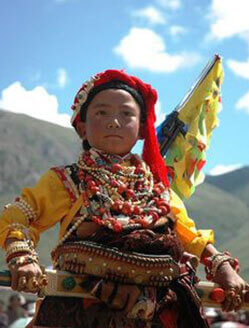
Tibet today is mixture of traditional as well as modern culture, yet it is a country, where lifestyle of people has hardly been changed over a period of time. Tibet is rich in tradition and many Tibetans still have lifestyles that have changed little over generations. It is also a modern country with urban Tibetans living lives that would be recognisable to most people across the world. Means of modern communications as mobile phone, smart phone and internet use is quite extensive among Tibetans. Tibetan Buddhism is an integral part of Tibet’s culture. The relation between Buddhism and Tibet is about 1000 years old; Lamas are spiritual teachers for Tibetans. The Dalai Lama is the most senior figure in Tibetan Buddhism. The present Dalai Lama, the 14th, is learnt to be the reincarnation of Chenrezig, the Buddha of Compassion. Another important figure in Tibetan Buddhism is the Panchen Lama. Tibetans refer to the Dalai Lama as the sun and the Panchen Lama as the moon.
Another important figure of Tibetan life is Nomadic Agriculture. The unique living conditions at Tibetan plateua has led to the pastroal nomadism as a way of living of Tibetans.
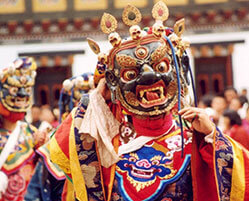
Tibet has various festivals that are commonly performed to worship the Buddha citation needed throughout the year. Losar is the Tibetan New Year Festival. Preparations for the festive event are manifested by special offerings to family shrine deities, painted doors with religious symbols, and other painstaking jobs done to prepare for the event. Tibetans eat Guthuk (barley noodle soup with filling) on New Year's Eve with their families. The Monlam Prayer Festival follows it in the first month of the Tibetan calendar, falling between the fourth and the eleventh days of the first Tibetan month. It involves dancing and participating in sports events, as well as sharing picnics. The event was established in 1049 by Tsong Khapa, the founder of the Dalai Lama and the Panchen Lama's order.
Travellers who are interested in Tibetan festivals are recommended to visit Tibet in August when the Shoton Festival, Nagqu Horse Racing Festival, and Ganden Thangka Festival are held.
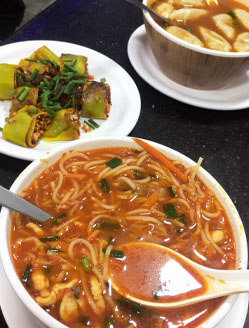
Traditionally, Tibetan food is mostly consisted of barley, meat (mutton or yak) and dairy products with a negligible use of spices or vegetables. When travelling in Tibet Chinese restaurants offers very excellent food in comparison to Tibetan food joints that mostly offer thukpa (noodle soup) and tea. Some most popular Tibetan dishes are Momos, Tingmo, Thukpa, Thenthuk and Yak Butter Tea. Other important point to keep in mind when you are on a trip to Tibet is to keep snacks or enough food for a few days or week to meet emergency in case of late or bus break down.
Traditionally, Tibetan food is mostly consisted of barley, meat (mutton or yak) and dairy products with a negligible use of spices or vegetables. When travelling in Tibet Chinese restaurants offers very excellent food in comparison to Tibetan food joints that mostly offer thukpa (noodle soup) and tea. Some most popular Tibetan dishes are Momos, Tingmo, Thukpa, Thenthuk and Yak Butter Tea. Other important point to keep in mind when you are on a trip to Tibet is to keep snacks or enough food for a few days or week to meet emergency in case of late or bus break down.
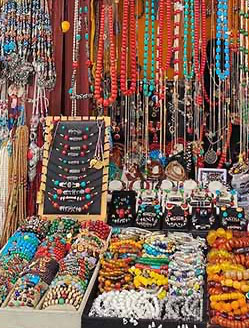
For grocery items shopping and general Merchandise Lhasa Department Store is the place to buy items. If you prefer buying souvenir items and artefacts then Barkhor is the place that you should go for. At Barkhor you can buy artist’s items as Buddha figures, prayer flags, copper teapots, horse bells and jewellery inlaid with turquoise and other gem, etc. These items with timeless carvings on them are generally made from gold, silver, copper and stones like turquoise.
International dialling Code for Tibet is 895. However, tourist mostly prefer mobile as a means of communication. The services of China Mobile and China Telecom are widespread across Tibet. Amazingly, the region from the Mt. Everest Base Camp to the peak of Mt. Everest is also covered under China mobile's service range.
The network of Internet cafes have developed in Tibet in recent times. Most cafes you will generally find at Lhasa, Shigatse, Bayi, Tsedang, and Dzogang and so on and charge CNY 2-5 per hour.
When travelling Tibet, remember, it to be one of the highest lands on the Earth and tend altitude sickness to occur there, occasionally. When reaching at some height, it is always advisable to acclimatize before going at much higher position. Those, who, are at the plateau region for the very first time should avoid from walking fast or run getting and indulging in any form of manual labour. It is always advisable to eat vegetables and fruits rich in vitamins. You can also use drugs to get yourself released from altitude sickness. However, it is imperative that one need to be beware of Dog’s in Tibet as at the land there exists a threat of bitten by a stray dogs that run in packs abundantly found at countryside.
220V, 50Hz (type I plug)
The official currency of Tibet is Chinese yuan (¥, CNY) that is accepted throughout the country. The official place to exchange the foreign currency and travellers cheques in Tibet is Bank of China. High end hotels in Lhasa have exchange services for guests. Other than Lahsa currency can be exchanged in Shigatse, Zhangmu, Purang (cash only) and Ali, and at the airport on arrival.
The primary language of Tibet is Tibetan that comes in different dialects; however, Mandarin (Chinese) is now in extensive use since the Chinese domination in Tibet. Tibetan language is far closer to Burmese and Dzongkha and quite distant from Chinese. At the cities and urban centres people speak Chinese fluently whereas at countryside it is rarely used.
The best time of the year to travel Tibet is between May to October when there is not much cold in Tibet and the average temperature remains around 10 degree celcius. It is the best period of the year to travel Tibet. July and August happens to be the rainy season in Tibet, however, the best time of the year for camping is May and September when rain rarely occurs in Tibet. If you are planning to tour Mt. Everest, then April, May, September is the best part of the year to travel otherwise Mount Everest remains behind the sky throughout the year
As Tibet is under the strict control of Chinese Government, it is not possible to travel Tibet independently in a backpacker style as earlier times. The trip to Tibet are organised as all travellers are needed to travel under a permit system. All paperwork is done by a tour agency except for application for the Chinese visa. At Lhasa, you will observe checkpoints at places, where, police may ask foreign tourist to show their passport from time to time. A New Permit policy is in implementation in Tibet since 2013. Certain remote locations also require a military permit. These are only available in Lhasa, where processing takes several days, and are only granted for an appropriate reason.
At present there is only one international flight carrier to Lhasa (Tibet) that is through Nepal (Kathamandu). Air China; however, fly three times in a week from Nepal to Lhasa. There are more flights from mainland China to Lhasa, but that requires Tibet Travel Permit. Foreign travellers need to take help of travel agencies to fly to Lhasa. With the help of Travel Agencies. Train is other way to reach Tibet from mainland China by The Qinghai-Tibet (Qingzang) Railway from Golmud to Lhasa that is in operation since July 2006. The journey is all the way from Beijing takes about 48 hours. A road from the North and South of Nepal with the help of a travel operator is another easy way to enter into Tibet.
For visiting around Tibet, bus is an easiest way to travel as Central Tibet has a good network of buses. Jeep tours, under the supervision of tour operators is another easy and attractive way to travel around, Tibet. Bicycle is also has emerged as a popular means to travel around Tibet.
Tibet offers one of the harsh climatic conditions for a human to live. Temperature in Tibet, whether during summer reaches above 29 degrees whereas it comes down to about minus 16 degrees in winter seasons? The sunlight remains so intense in the region so that city is also known as a Sunlight City.
For accommodation purpose many good number of hotels have sprung up in bigger cities as Lhasa, Gyangtse and Shigatse that provide quality accommodation for visiting tourists. In the smaller towns accommodation facilities that you will get are very basic during the peak seasons in July & August, you may find it difficult to book the room.
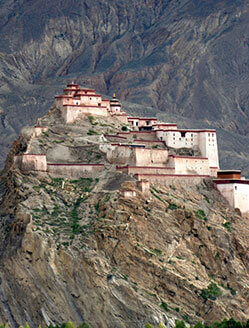
Lhasa - Shigatse, Gyangatse, Tsedang, Potala palace, Seramonastery, Drepung monastery, Jokhang Temple and Barkhor market, Norbulingkha - Dalai Lama's palace, Mt. Kailash, Kashgar, Paryang Mansarovar lake etc.
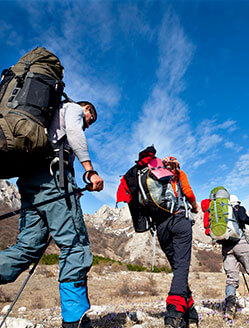
Pasaumtso (Draksum Lake), Pasaumtsoto Nyingte via Sikemla pass trekking, Tsedang visit (Yumbulhakang and Tardruk Temple and Kings Tome), Samye Monastery visit, Lanzhuo & Ladrang camping, Ladrang & Repkong camping, Ziling & Kumbumcamping, Kumbum & Chabcha camping, Chabcha & Mt Amnye Machencamping, Kham lakes, Etc. Request for Price.
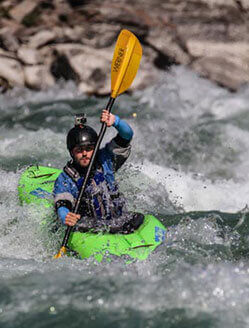
Northern Tibet Plateau, Xigaze (Qiangtang Plateau, along the Yarlung Tsangpo River), Kathmandu Mountain Biking Riwuqi ancientfort to Sagar, Zongbar to Paryang river bank and desert camping, Barheto Guge dynasty ruin, Mount Everest, Dinzi and Zhangmu visit.
The Monasteries of Spiti and Kunavar, Kodari, Nyalam, Yak Kharka, Dongpa, Mayumla Phedi, Lake Manasarovar, Dirapuk, Zutulphuk, Mt. Kailash Parikrama.
Rafting the Kong Po Chu & Draksum Chu, Lhasa - Kathmandu mountain biking, crossing the border from Tibet into Nepal etc.
Kailash Mansarovar Yatra is one of the holiest pilgrimage for the followers of Hindu, Jain, Buddhist and Bon religions. Every year thousands of people undertake this Yatra. Other than pilgrims adventure seekers also visit Kailash Manasarovar to have a feel of high mount Kailash and experience the religions significance of the place.
Put us on work to plan your next travel. Send your details to our experts now to get a free travel plan with quote